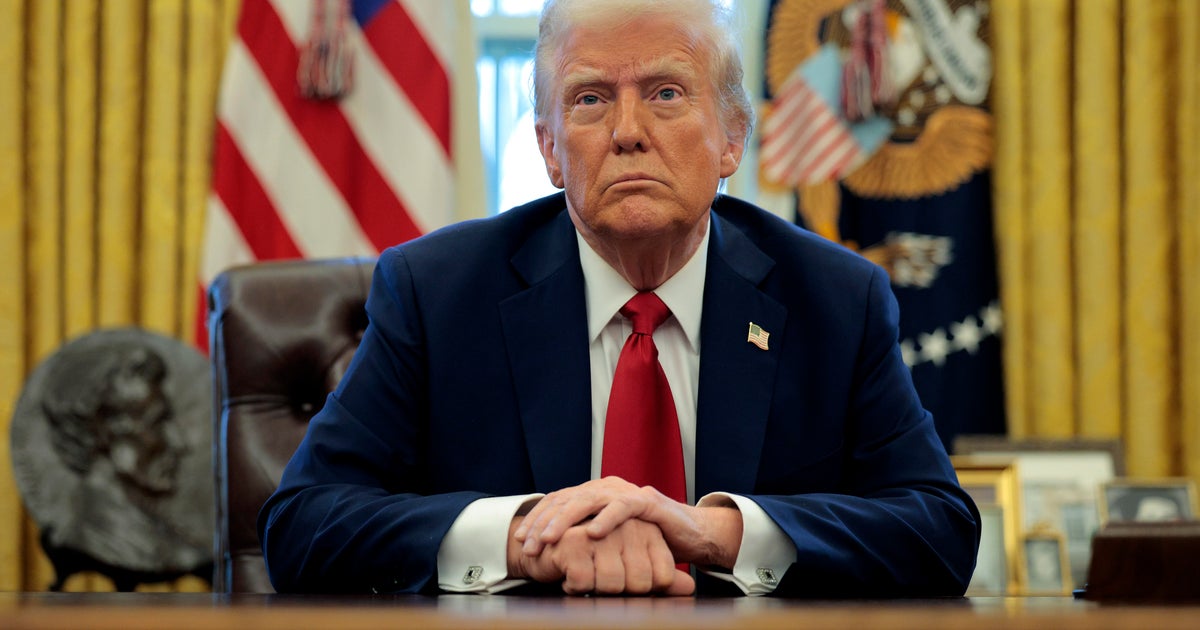CBS News poll analysis looks at how Americans rate the economy through a partisan lens
There are various factors that go into how people evaluate the country's economy — their own personal financial situation, the price of goods, economic indicators — but there's one more that might not immediately come to mind: political partisanship.
Public perceptions of the nation's economy have grown more connected to political partisanship and more specifically, to which party controls the White House.
For much of the past two decades, Republicans have viewed the economy more positively when a Republican president is in office, and Democrats have viewed it more positively when a Democratic president is in office.
In keeping with that trend, in the latest CBS News poll, 52% of Democrats said the economy is good, compared to just 15% of Republicans who said so.
It wasn't always like this.
The chart below shows the average percentage rating the economy as good by political party for each year.
In CBS News polls conducted throughout the 1990s, the economy rating gap between the Democrats and Republicans — the difference between the percentage of each saying good — averaged 11 points. That average has more than doubled to 30 points since then.
During the late 1990s, a period of relative economic prosperity and when Americans were feeling pretty happy about the economy, similarly large majorities of both Republicans and Democrats rated the economy as "good" — all this while a Democrat, Bill Clinton, was in office. And before then, during George H.W. Bush's administration, when the economy was not as robust, the partisan gap on ratings of the economy was far more narrow than it is today.
What happened?
Looking back over decades of CBS News polling, partisans' views of the economy started to diverge more dramatically in the early aughts, during Republican George W. Bush's administration.
At the time, the country was deeply polarized after the contentious 2000 presidential election and its aftermath. Except for a rally effect around then-President Bush after the 9/11 attacks — a time when partisans came together on many issues — these large partisan splits on evaluations of the economy began to materialize.
Since then, with some exceptions (more on that later), how Americans assess the economy began to be viewed more through a political lens, and this became more connected to the party of the sitting president.
In more recent years, the pace at which this gap emerges has accelerated, a further sign that views of the economy have often become a proxy for views of the sitting president.
For instance, in December 2016, while Barack Obama was still president, only 32% of Republicans said the economy was good, but that number shot up to 61% in February 2017, just two months later — and barely 30 days into Donald Trump's presidency.
Similarly, we saw the percentage of Democrats who said the economy was good jump 24 points soon after Joe Biden took office.
When the economy is bad, sometimes both parties say that it is
We've seen the gap narrow during crises and unexpected national events, indicating there are times when economic evaluations are less colored by politics and who sits in the Oval Office. We saw this most recently with COVID-19 pandemic lockdowns. In the spring of 2020, positive views of the economy plummeted among both Republicans and Democrats.
Also in the fall of 2008, amid the country's financial crisis, similarly large majorities of Democrats and Republicans offered gloomy assessments of the economy. The gap between the percentage of Democrats and Republicans who viewed the economy as good was just 10 points.
So, all in all, when you see measures on how Americans rate the economy these days, it may be a valid opinion, but political partisanship is likely shaping some of these views.
This analysis is based on CBS News polls conducted from 1990 to 2023 among U.S. adults nationwide. The figures for the year 2022 include some polls among registered voters. Polls from 2020 to 2023 were conducted online. Before 2020, most polls were conducted by phone. Line chart created by Tim Hunter.





